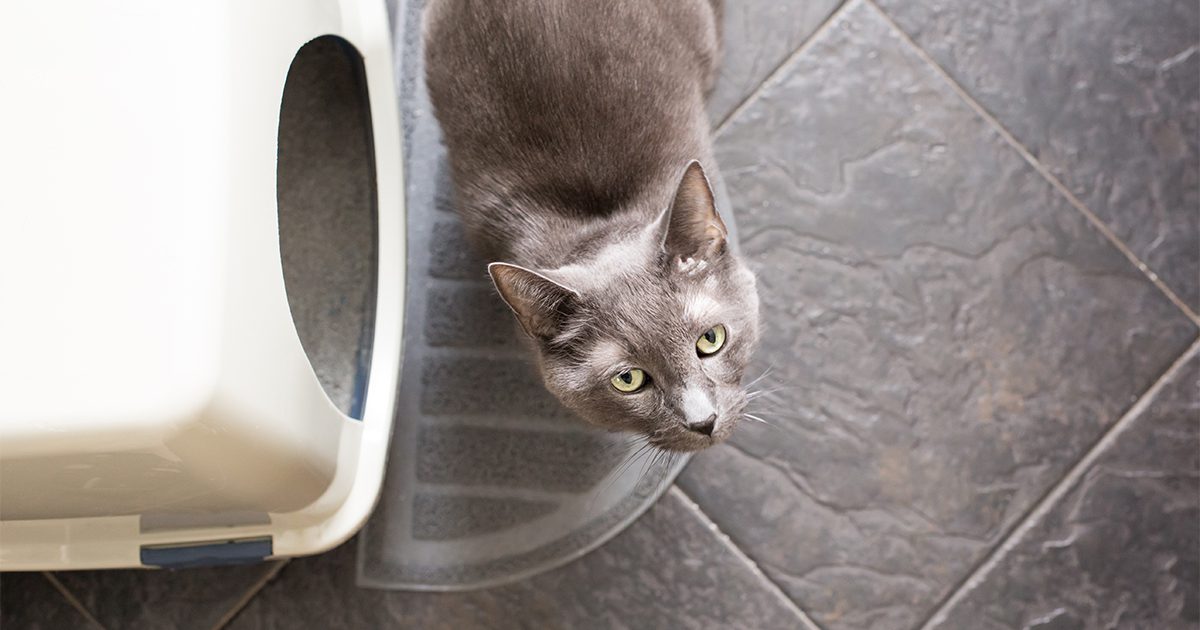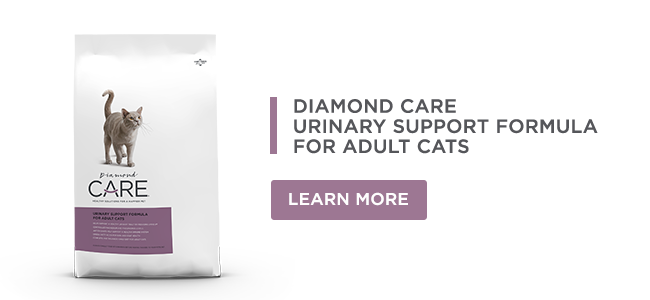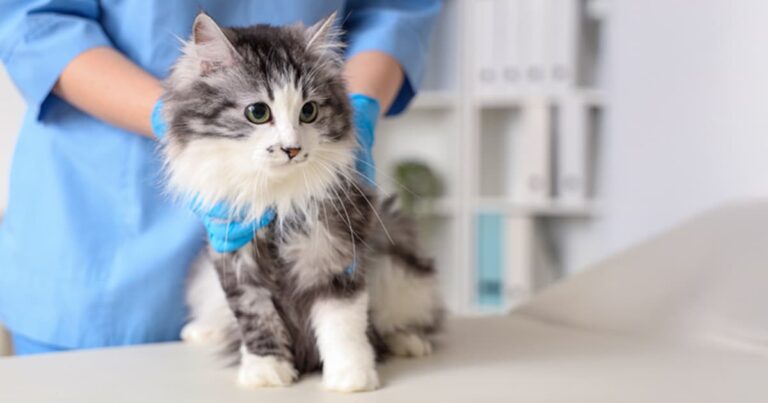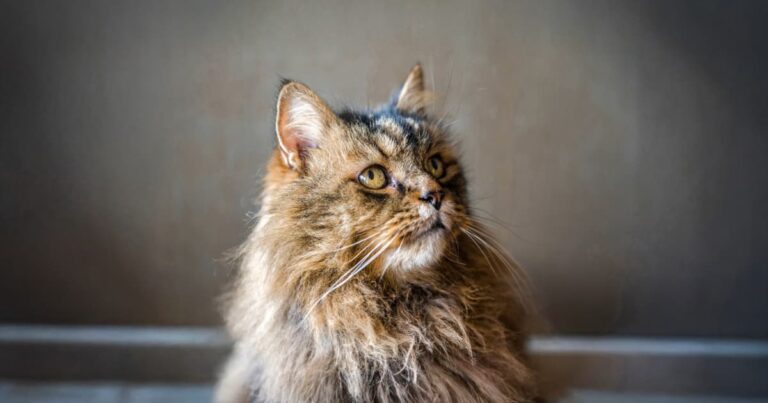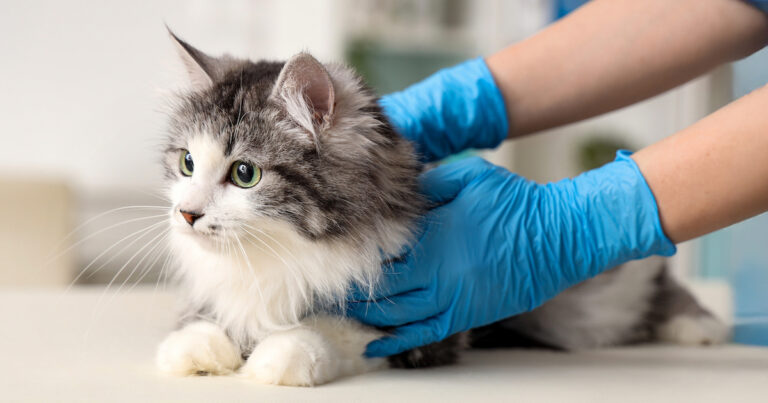Cats are generally known to be clean and habitual creatures. So if your cat is suddenly making more trips to the litter box than usual — or worse, not using the litter box at all — that’s a good indicator that something is up. While UTIs are one possible explanation, they’re actually uncommon in healthy cats under 10 years old. More often, urinary issues in younger cats are due to other conditions such as feline idiopathic cystitis (FIC), urinary stones or behavioral issues. However, in older cats (especially those with other health conditions), UTIs become more likely.
What Causes a Urinary Tract Infection in Cats?
First, a quick anatomy lesson. The urinary tract consists of the kidneys, the ureters (the tubes that carry urine from the kidneys to the bladder), the bladder and the urethra (the tube that transports urine from the bladder to outside the body).
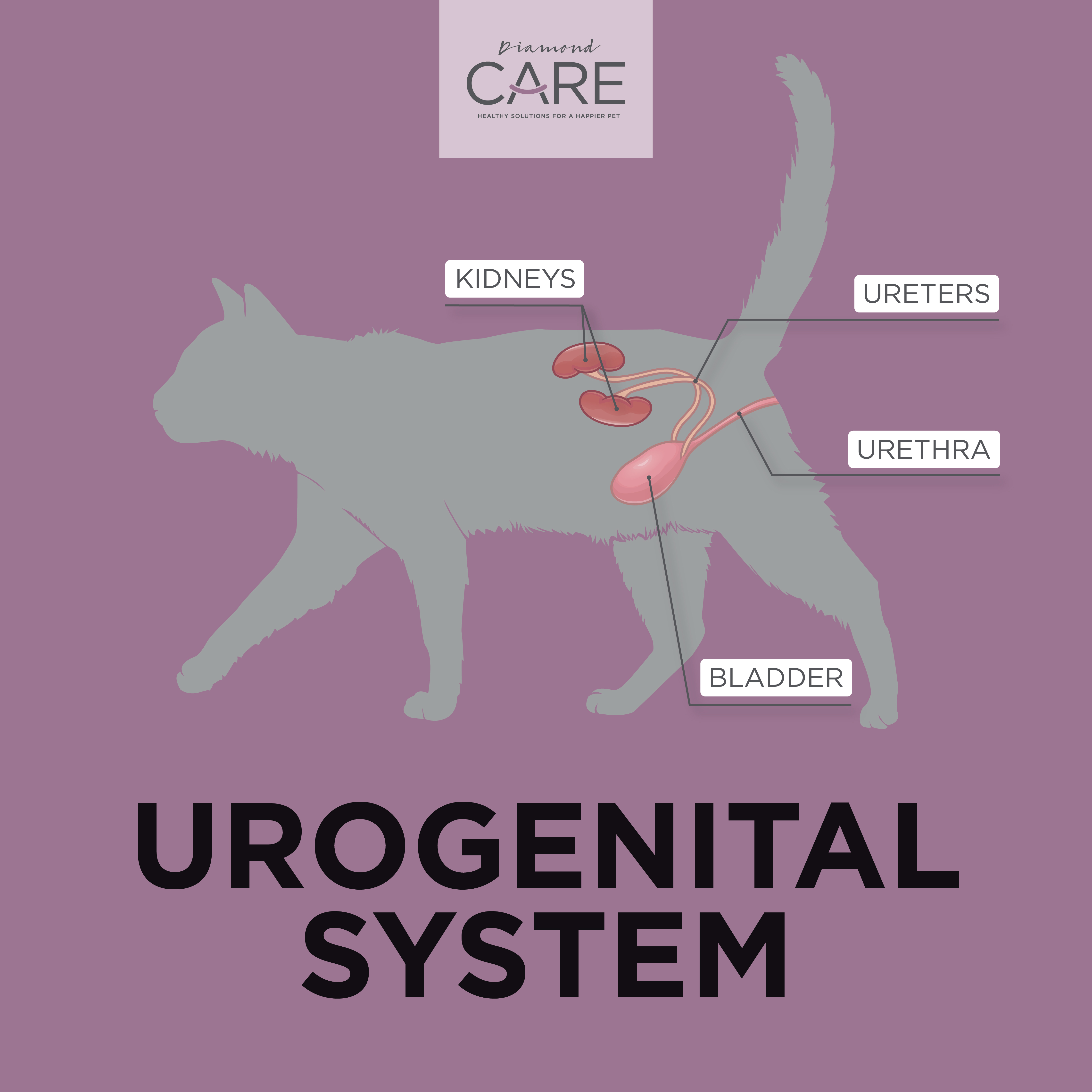
Urinary tract infections can affect any part of the urinary tract. However, a UTI usually refers to a bacterial infection in the bladder. Most urinary tract infections in cats are caused by bacteria that are normally found on the skin or in the digestive system, although viruses and fungi can also affect the urinary tract. These bacteria enter the urethra and travel upward into the bladder where they multiply. If left untreated, these bacteria may move up the ureters into the kidneys, resulting in a kidney infection.
However, in cats under 10 years of age, true bacterial infections are relatively uncommon. Urinary signs are more often caused by feline idiopathic cystitis, an inflammation of the bladder that’s linked with stress. Urinary stones and urethral blockage (a medical emergency, typically in male cats) are also among the possible causes. These conditions that affect the urinary bladder and/or the urethra are grouped under the term feline lower urinary tract disease (FLUTD, pronounced “fluted”).
In cats over 10 years of age, the incidence of UTIs increases, particularly in those with chronic kidney disease, diabetes or hyperthyroidism. Older cats may show few or no signs, so it’s important that your senior cat has regular checkups, typically twice a year. Your vet will likely also recommend that blood and urine testing be performed at least once a year or more frequently, depending on your kitty’s health.
Keep in mind, not all urination issues are medical. At any age, it’s also possible for cats to urinate inappropriately because they don’t like something about the litter box itself. They may dislike the scent or texture of the litter or the placement of the box, or the box may not be cleaned often enough for their liking.
Signs of a UTI in Cats
Cats with urinary tract infections or other urinary tract issues may show:
- Straining or crying out in the litter box
- Frequent urination, often in small amounts
- Urinating outside the litter box
- Blood in the urine
- Increased water consumption
- Lethargy or hiding
- Excessive vocalization
- Overgrooming of the belly or genital area
If any of these signs are observed, consider yourself notified that there’s a problem. These signs are not specific to UTIs and may indicate other urinary issues, including FIC or urethral blockage. If your cat is exhibiting any of these signs, contact your veterinarian promptly.
Female Cat UTI Symptoms vs. Male Cat UTI Symptoms
While symptoms of UTIs are similar for both sexes, male cats are at higher risk for urethral obstruction due to their longer, narrower urethra. A blockage prevents urine from exiting the body, causing the bladder to become painfully distended, and this can eventually affect the ureters and kidneys.
As a result, toxins that are usually eliminated in the urine build up in the cat’s blood, leading to vomiting, weakness and lethargy. The resulting acid/base imbalances and abnormal electrolyte levels can ultimately lead to heart failure in as little as 24–48 hours. Kidney damage may also occur.
A urethral obstruction is a life-threatening emergency and is fatal without treatment. If treated early enough, recovery rates are high. If you have a male cat that is showing signs of a UTI, it’s important to seek veterinary treatment immediately. Female cats with urinary tract symptoms should be seen within 24 hours or immediately if they are not passing any urine.
Diagnosing a Cat Urinary Tract Infection
To help determine why your cat is having urinary problems, your veterinarian will perform a physical exam and ask about your cat’s history, behavior and environment. It is important to take note of any recent changes in your cat’s daily life (especially any added stress).
The most accurate way to diagnose a UTI is through a urinalysis and urine culture. Cystocentesis (inserting a needle directly into the bladder), is the preferred method for obtaining a sterile urine sample. Other sampling procedures, such as collecting urine off a tabletop or from a litter box filled with plastic beads, are considered contaminated by bacteria from the cat’s urethra, the genital area and the table/litter box surface.
A urinalysis includes examining the urine sediment under a microscope and looking for signs of a UTI such as bacteria and/or white blood cells. A urine culture and sensitivity test may also be recommended, which will identify the specific bacteria involved and the most effective antibiotic to treat it.
Your vet may also recommend an abdominal radiograph (X-ray) or ultrasound to check for bladder stones and bloodwork to rule out kidney involvement and systemic illness. In cats with recurring urinary tract infections, additional diagnostics are often needed.
Cat UTI Treatment
If your cat has clinical signs and the urinalysis and culture show evidence of a UTI, your vet will recommend treatment with an antibiotic. It’s important to give your cat the entire course of prescribed antibiotics, even if your cat’s urinary symptoms improve soon after the medications are started.
Additionally, nutrition can be an important part of feline lower urinary tract disease management. Feeding a specialty diet like Diamond CARE Urinary Support Formula for Adult Cats helps by controlling mineral concentrations and maintaining a healthy urine pH.
Hydration is also important to managing FLUTD. To encourage your cat to drink more, water should be clean, fresh and available at all times. Some cats may drink more if they have access to a pet water fountain. Studies seem to indicate that feeding wet food is more successful at maintaining hydration than dry food.
You may also need to rethink litter box management for a cat with feline urinary tract disease. Ideally, your cat should have access to an appropriate number of litter boxes — usually one more than the number of cats in the home — with the type of litter that your cat prefers. Boxes should be placed in quiet areas of the house that your cat can easily access. Finally, you’ll need to scoop the litter box once or twice a day and completely change the litter regularly.
How Long Do UTIs Last in Cats?
Most cats respond to treatment within around 7–10 days. Your vet may recommend checking your cat’s urine again to confirm the infection has cleared. If your cat repeatedly gets UTIs, your vet may perform more tests to look for the underlying cause behind the recurrent infections.
Monitor Your Cat’s Urinary Habits
Maintaining urinary tract health is essential to the overall well-being of our feline companions. Cats normally visit the litter box one to four times a day, so be sure to figure out what’s normal for your kitty. Any abnormal urinary behavior — especially a change in frequency, straining urinating outside the box — warrants a vet visit. Prompt diagnosis and treatment can prevent complications and discomfort.

